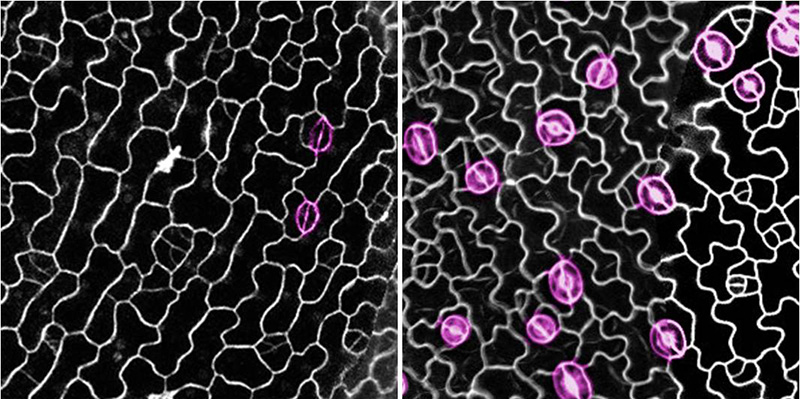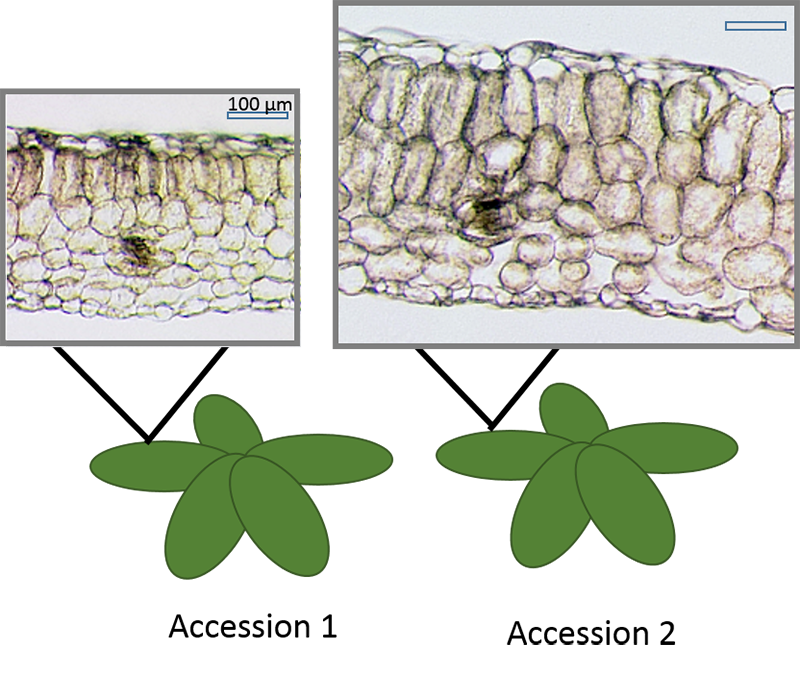Auxin and light shape the leaf for efficient photosynthesis
Light controls many aspects of leaf architecture to ensure efficient photosynthesis and thus also yield. The formation of stomata is controlled by light, and our recent findings show that auxin is a key regulator of this process. We also analyse other aspects of leaf architecture to identify novel regulators of leaf development.
With climate change at the doorstep, it is essential to breed new plant varieties that can cope with environmental stress and still produce large amounts of biomass. Since light is the plant’s primary source of energy, it is one of the most crucial factors that affects crop yield; therefore, it regulates many aspects not only of plant metabolism, but also of plant – and in particular – leaf development. It promotes the formation of stomata – the epidermal pores that allow gas exchange crucial for photosynthesis –, but it also shapes the leaf interior, controlling chloroplast differentiation, vein patterning as well as division and elongation of mesophyll cells. Proper leaf development is vital for efficient photosynthesis and thus ultimately affects plant growth and yield.
We recently identified the plant hormone auxin as a novel regulator of light-dependent stomata formation in the model plant Arabidopsis thaliana: Auxin inhibits stomata differentiation in darkness, ensuring that resources are invested in this process only when the plant is able to perform photosynthesis. Perturbations in auxin biosynthesis, transport or signalling result in aberrant stomata formation in darkness (Balcerowicz et al., 2014).
In addition, our recent project within CEPLAS aims to understand the control of leaf architecture by light. To this end, we examine the natural genetic variation of leaf architecture traits in Arabidopsis and map these traits to the responsible genetic loci. These experiments will allow us to identify genes that control leaf structure and development and thereby affect photosynthetic performance. Knowing these genes may help crop breeders to generate high-yield crops that perform well under multiple environmental conditions.
Contribution by Eva Willée and Martin Balcerowicz , Botanical Institute, Cologne Biocenter
Planter’s Punch
Under the heading Planter’s Punch we present each month one special aspect of the CEPLAS research programme. All contributions are prepared by our young researchers.
Corresponding publication
Balcerowicz M, Ranjan A, Rupprecht L, Fiene G, & Hoecker U (2014) Auxin represses stomatal development in dark-grown seedlings via Aux/IAA proteins. Development 141(16):3165-3176. [Abstract]

